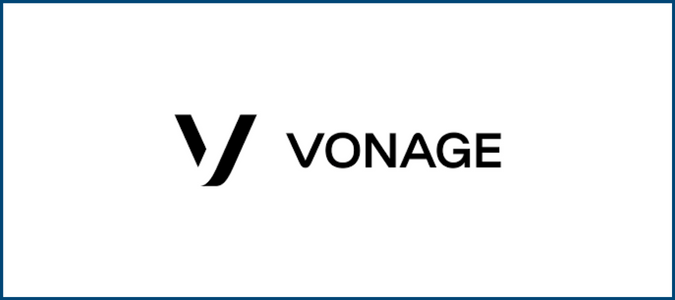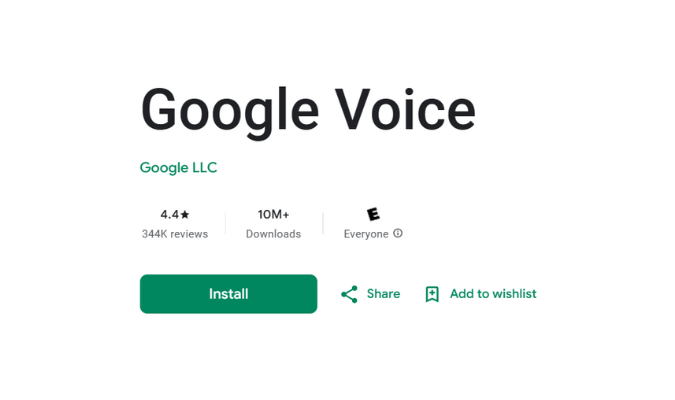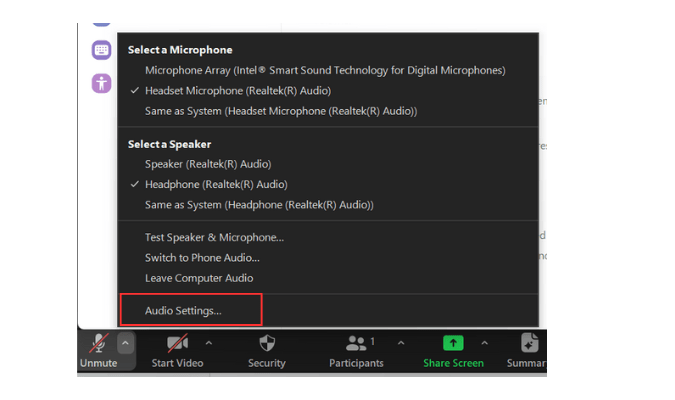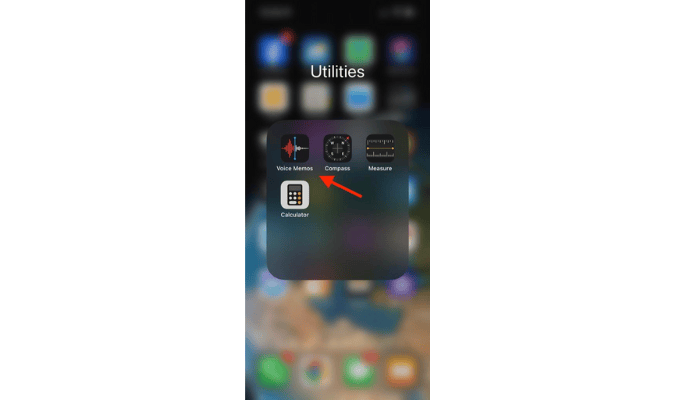After researching 29 different phone systems, we found Nextiva to be the best for most. It has solutions for every type of business, from brand new to the most complex contact centers.
No matter what you need, it’s flexible, easy to implement, highly scalable, and supports dozens of hardware options (if you need physical phones). As one of the most feature-rich and well-supported systems out there, it’s tough to beat. See Nextiva in action for yourself or keep reading to learn more about it and the other top business phone systems on the market.
The Top Business Phone Systems
These are our top picks that cover the needs of most people looking for a business phone system:
- Best phone system for most: Nextiva
- Decent alternatives: RingCentral, Ooma, and Vonage
- Simple systems for basic needs: Phone.com and 1-VoIP
The recommendations below may be a better fit for specific situations:
- Virtual numbers: OpenPhone, Grasshopper, Talkroute, and 800.com
- Unlimited international: GoTo Connect, Zoom, and Aircall
- For contact centers: Dialpad, Cloudtalk, and CallHippo
Our Business Phone System Review Process
We set out to review every phone system out there–as many as we could find, at least. We started with 29 before narrowing it down to our top six picks and 10 alternatives for specific situations.
Beyond call quality and reliability, we looked closely at factors like internal collaboration, ease of implementation, the user interface, basic call handling, hardware combability, international calling, toll-free minutes, and customer service.
Our research team spent months digging into the specifics, learning how they work, figuring out what matters, what’s noise, and which options are best for different scenarios.
We distilled all the key points from more than 200 pages of research below.
Nextiva: The Best Business Phone System For Most

Nextiva is one of the most reputable and reliable business phone systems on the market.
It fits the needs of just about anyone—from small businesses to complex call centers, Nextiva does just about everything.
Whether you’re in a traditional office setting with a handful of employees or you have hundreds of hybrid and remote staff in a call center, you’ll be happy with Nextiva.
With a clean and organized UI, anyone on your team will feel right at home. On the administrative side, that ease of use extends to managing the system’s administrative tasks, like setting up voicemail, adding users, and customizing the call flow.
Plus, the platform’s Admin Portal gives you step-by-step guides to help you configure settings and implement the system across your business.
But Nextiva doesn’t just work for phone calls. You can use its video features to meet and collaborate with up to 250 people or allow your teams to collaborate on an upcoming project through group messaging.
You’ll also get online faxing, basic SMS features, file sharing, and more.
Plus, you’ll get all the standard phone features. From simple tools like caller ID and voicemail to advanced features like multi-level auto-attendant and HIPAA compliance, Nextiva can be molded to fit any business.
It’s flexibility is second to none–it morphs to work how you do, rather than the other way around.
Nextiva also caters to the needs of inbound and outbound call centers—in traditional on-site contact center environments, virtual call centers, or both. You can set up advanced interactive voice response systems for self-servicing and customize your call routing tree to ensure inbound calls are quickly answered by the right person.
Regardless of your needs, you can honestly… stop your search now. You don’t have to take our word for it–you can get a free demo to see in action plus try it free before spending a penny.
But if you want to learn more about why we love it, check out our full Nextiva review for a deeper dive.
RingCentral: Cheaper Call Recording, Tougher Set Up

RingCentral is another top-notch business phone solution. In terms of overall call quality, reliability, and customer service, it’s essentially neck-and-neck with Nextiva.
That said, Nextiva is definitely easier to use and set up. Nextiva also has higher texting limits, a stronger built-in CRM, more toll-free minutes, and unlimited faxing available on every plan.
These differences, particularly for ease of use and deployment, make Nextiva the better choice for most businesses.
However, RingCentral offers call recording on every plan—whereas Nextiva only offers this at its highest tier. You will have to sign up for one of RingCentral’s higher-tiered plans to automatically record every call, but you can do it on demand at every level.
RingCentral also provides a wider range of integrations and advanced features compared to Nextiva. This can be good if you need them, but it typically makes things more complicated if you don’t (most standard business don’t).
Ooma: Easiest Setup, Lacking Long-Term Scalability

Users praise Ooma for its ease of use and convenient setup, especially when it comes to adding new users and configuring the system to work with a business’s specific needs.
Even if you use desk phones. it offers preactivated hardware that works as soon as it’s plugged in.
Whether your operation is entirely virtual or bound to an office, most small businesses can get set up and running in just 15 minutes.
Ooma’s system gives you local or toll-free numbers with unlimited calling to the United States, Canada, and Mexico. Combined with low international per-minute call rates, that means your global team can communicate with one another without wrecking your budget.
While Ooma doesn’t include team messaging or file sharing, some plans allow for video conferencing, texting, and virtual faxing in addition to voice calling.
All of this is fine if you’re a smaller business that plans on staying small for the foreseeable future. But if you plan on growing at all, you’ll reach a point where Ooma can no longer grow with you.
You also won’t get advanced call management capabilities, call center tools, or AI functionality, yet it’s essentially the same price as other high-octane providers.
Ooma’s entry-level plan doesn’t even include a desktop app. It doesn’t offer HIPAA compliance and only offers really basic analytics. You might be able to live with this stuff for a year or two, but many businesses will eventually need something that does a bit more.
Check out our Ooma review if it’s ease of DIY implementation and simple management appeal to you.
Vonage: A Great Deal if You Don’t Need Physical Phones

Vonage has a super affordable softphone-only plan that’s fine if you just need the basics and can get by making and receiving calls from your smart phone or computer. It starts at just over $10 per user per month if you have more than 20 users.
It’s definitely a steal. However, many features you’d get standard with other providers are only available as add-ons. Once you start adding these on, it’s no longer a good deal.
You can essentially get all of these features (and more) for less money with Nextiva.
This ultimately makes Nextiva a better value than Vonage, even if you’re small and don’t need any hardware.
That said, Vonage does have some bundled international plans that are a great value if you’re doing lots of international calling. This is one instance where it may make sense to go with Vonage over Nextiva.
Vonage also has over 100 integrations via its app marketplace. One of the cooler integrations is the ability to connect it with Livestorm to run webinars and live events on Vonage’s infrastructure.
Just be aware that Vonage doesn’t offer 24/7 support. While this isn’t a dealbreaker, it can be a serious pain if you need help after hours.
See our in-depth review of Vonage for more information.
Simple Business Phone Systems: Phone.com and 1-VoIP
Phone.com and 1-VoIP are both cheap, simple phone systems if all you need is a barebones set up that lets your team make and take the occasional phone call. If you can afford Nextiva, we still recommend it over both of these.
But we want to make sure you understand all of your options, especially if price is your top concern.
Phone.com–Great for Infrequent Calling

Phone.com is the way to go if you want a low-cost solution now that’s flexible enough to scale up when you need it to. This platform works especially well for seasonal businesses, smaller remote work teams, and sporadic call volumes.
On its entry-level plan alone, you get 500 shared minutes, one number per user, and conferencing for up to 10 participants.
What makes Phone.com unique is the ability to mix and match users. You can put a couple users on a higher-priced plan while keeping the rest of your staff on a basic tier. This gives you the freedom to supply features and administration only to specific users who need them. You can save a ton because you’re not forced to put everyone on higher-costing plans.
Even as a bare-bones VoIP provider, Phone.com offers video meetings and HIPAA-compliant solutions. The video calls aren’t quite as advanced as other systems on the market, but they get the job done for one-off situations.
1-VoIP–Compatible with a Bunch of Legacy IP Phones

1-VoIP is a good option for businesses needing a simple phone service without a bunch of bells and whistles. Its business phone system offerings may lack some features that others deliver, like faxing and team chat, but you’ll pay a low monthly rate per extension for voice calling.
Its pay-as-you-go pricing model works for companies that aren’t reliant on constant calling. For infrequent calling needs, you can save quite a bit of money with 1-VoIP compared to the feature-packed communication suites on the market.
For a budget-friendly solution, 1-VoIP is surprisingly reliable. It boasts an impressive 99.999% uptime rate, regardless of where your team members are located.
It’s also worth noting that 1-VoIP is compatible with a wide range of different IP phones, which is a nice perk for traditional office settings or instances where your team prefers desk phones or softphones. But Phone.com probably makes more sense if you just want to use your smartphones or computers for calling.
If you need to make video calls, 1-VoIP won’t work for you. You’ll be better off with Phone.com or one of the other, more powerful phone providers on our list.
Just Need a Virtual Phone Number? These Are the Best Options
Virtual phone number providers are ideal for adding a dedicated business line to your existing phone so you can separate personal calls from business.
If you’ve ever made a call through Google Voice, you’ve already used one.
Grasshopper is the simplest and most popular–it’s also what we use. Its True Solo plan is the best option for single users who just want an extra line. Check out our full Grasshopper review to learn more about its plans and features.
If you want a more advanced option, TalkRoute is a good way to go. However, it’s priced higher than the rest. At this price, it probably makes more sense to get a full phone system.
800.com is great if you need a toll-free number. It has affordable options whether you need just a few minutes per month or unlimited. Learn how to get a 1-800 number and see how 800.com can help you set one up quickly and easily.
If your team is going to share a virtual number, OpenPhone is your best bet. However, there are setup and carrier fees that add to our monthly bill.
It’s cheapest plan also maxes out at ten users, although you should probably go with something more advanced (like Nextiva) if your team is already that large.
Best Unlimited International Calling Options
Nextiva charges international calls per minute, which is fine for infrequent calling but can get expensive at scale.
At scale, you’ll be better off with unlimited international calling. The best one for your business will ultimately boil down to which countries you need to reach.
GoTo Connect offers unlimited international calling to 52 countries on its Standard and Premium plans.
If you also do a lot of virtual face-to-face meetings, Zoom‘s international plan supports unlimited calling to 40 different countries and includes video conferencing.
Aircall is better for obtaining international phone numbers in areas where you do business. This is ideal for outbound sales as well as inbound support, as customers in those areas will feel more comfortable dialing or answering calls from a number they recognize.
Regardless of the provider you choose, make sure you look closely at the list of supported countries.
Advanced Business Phone Systems for Contact Centers
Call center software offers a lot more functionality vs standard business phone systems. These solutions are equipped to handle a high volume of inbound and outbound calls.
Whether you’re running a contact center or call center, you should also look for a solution that comes with advanced reporting, agent training tools, automatic call recording, IVR features, and a live view of your most important call center metrics.
Nextiva is a great option. It has dedicated call center plans, but its regular business phone plans can also be used for smaller teams—as it’s feature-packed enough to support a high volume and route calls appropriately.
However, there are a few other providers we recommend for different situations.
If you do a lot of outbound calling, CallHippo is a viable solution. It’s easy to set up–extensions can be configured in a matter of minutes. Sales teams can take advantage of its voice broadcasting system, which lets you send a prerecorded voice message to multiple people.
Dialpad and CloudTalk are fairly similar, as both offer a wide range of advanced call center features.
Dialpad boasts powerful AI technology to support meeting transcriptions, post-call summaries, and live speech coaching. You can get immediate feedback about calls without having to listen first, then give key guidance to agents after the call to improve results next time around.
If you’re looking for a highly customizable call routing system, CloudTalk has the edge.
With both ACD and IVR capabilities, it lets you manage calls in the specific way you want, plus automate aspects of your call flow. You can also use its power dialer, predictive dialer, automated call back feature, and caller emotion analytics to take your call center to the next level.
Business Phone Systems vs VoIP: Terminology Explained
VoIP (voice over internet protocol) is a type of business phone system that allows calls to be made over the internet instead of a traditional landline. Most modern VoIP phone services are also cloud-based phone systems—so these two terms are starting to become interchangeable. Technically, you can have a VoIP phone system that’s installed and maintained on-premises (instead of the cloud) or a non-VoIP business phone system, although we typically don’t recommend these.
A virtual phone number lets you make and receive calls from smartphones, computers, or IP phones without a hardwired telephone line.
This is the type of phone number provided by VoIP and cloud-based phone providers.
A multi-line phone system just means you can handle two or more calls at the same time. Callers can be placed on hold while an internal or external number is dialed, and it’s something that’s commonly offered from VoIP and non-VoIP business phone systems.
PBX stands for private branch exchange, which is an internal network that allows for internal calls within a company or organization. There are several different ways to set up a PBX phone system, but a hosted cloud VoIP is often the best route.
Despite the minor differences between business phone systems, most of these terms are starting to converge on each other.
Honestly, the differences between all the terms don’t matter much. The right business phone system will help you determine which one’s the right solution for you.
What Matters When Reviewing Business Phone Systems
We looked closely at a ton off metrics when putting this guide together. We summarized the ten most important considerations below.
Phone System Setup
No matter what you use your business phone system for, straightforward setup and beginner-friendly usability are no-brainers. There are far too many easy systems out there to suffer with something nobody likes to use.
Although an IT department can help set up the VoIP system for larger companies, each agent should be able to operate on the system with ease.
This is particularly important if your phone systems will be deployed remotely to home offices or hybrid work environments.
Call Handling Features
Businesses with high call volumes lean on phone systems to send calls to the right person and make it easy for agents to find customer information.
Whether that’s accomplished through an ACD (automatic call distributor), IVR (interactive voice response), virtual receptionist, live receptionist, or some combination of these, call handling features are crucial for speed and efficiency with inbound calls.
Call Recording and Analytics
Tons of businesses record calls and monitor call analytics to ensure that all customer needs are adequately met. These recordings can show supervisors when extra training might be necessary, while analytics could indicate areas of improvement with holding times, support escalations, and other factors.
Call recording can also be used for compliance or legal purposes.
Internal Collaboration Tools
In addition to basic audio calling functionality, many of the best business phone systems provide collaborative tools built for teams. From video calling and file sharing to texting, faxing, direct inward dialing, and team chat, you can get a lot more than just calling.
Desktop and Mobile Apps
Apps are really important if you’re not planning to purchase hardware and want your team to make calls using their existing devices.
Integrations
Connecting your business phone system to the tools your team uses every day can streamline communications and productivity.
The number of integrations doesn’t matter as much as the specific solutions a provider integrates with and how deep the integration goes.
International Calling
If a business phone system charges for international calls by the minute, it can get expensive really quickly–especially if they happen regularly.
Some providers offer unlimited international plans to certain countries to help keep these unpredictable costs as low as possible. If all your calls are in North America, this won’t matter to you.
Security and Compliance
Many companies do a lot of business over the phone, meaning that sensitive information, like bank numbers and identifying data, travels over their phone lines. High-level end-to-end encryption and security can keep this information safe.
Your system may also need to comply with specific regulations, like GDPR or HIPAA compliance.
Hardware and Equipment Compatibility
Most modern business phone systems don’t require hardware beyond a smartphone or computer.
You may want desk phones, though. If you already have some you want to continue using, make sure the provider you choose can support it. When purchasing new equipment, it’s best to buy it directly from your provider to ensure plug-and-play implementation.
Call Center Features
Call center features are necessary for dealing with a high volume of inbound or outbound calls.
For inbound calls, routing features are essential—especially if they can also provide reps with more context about the caller.
For outbound calls, you’ll want to look for auto dialers, predictive dialers, and other tools that help maximize the amount of time your reps spend talking to real people, as opposed to wasting time dialing numbers, listening to ringtones, or leaving voicemails.




